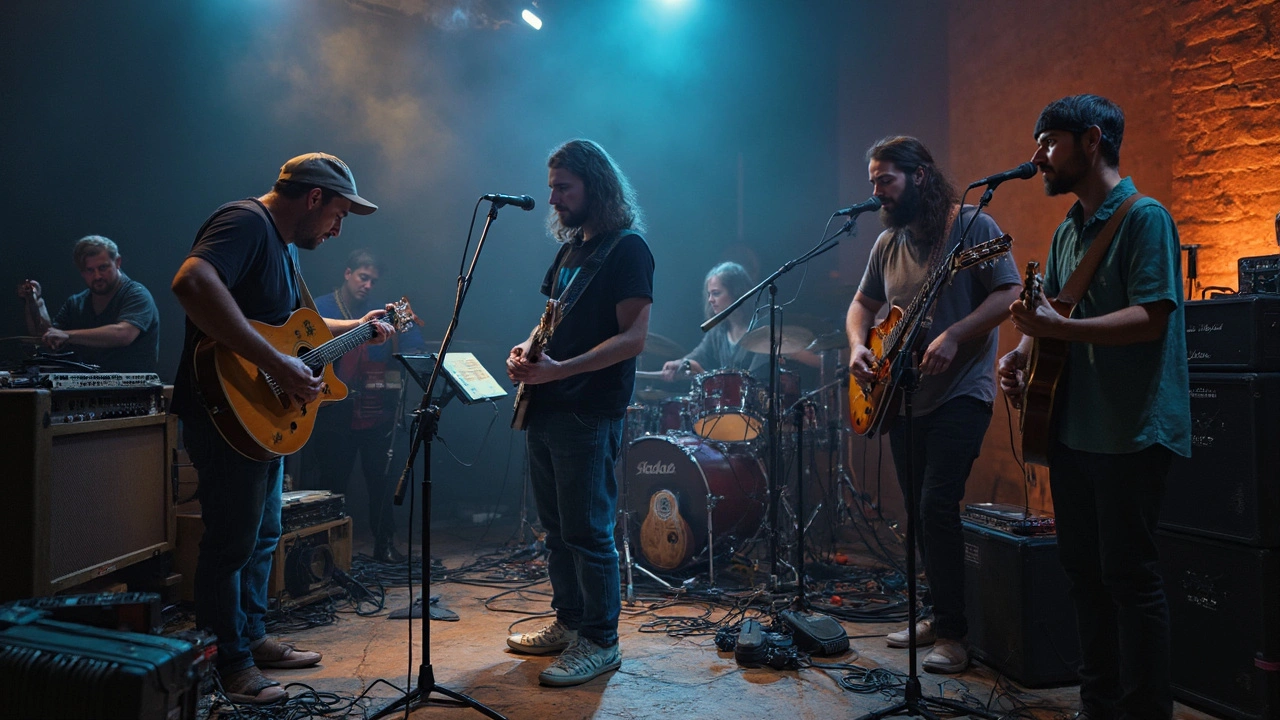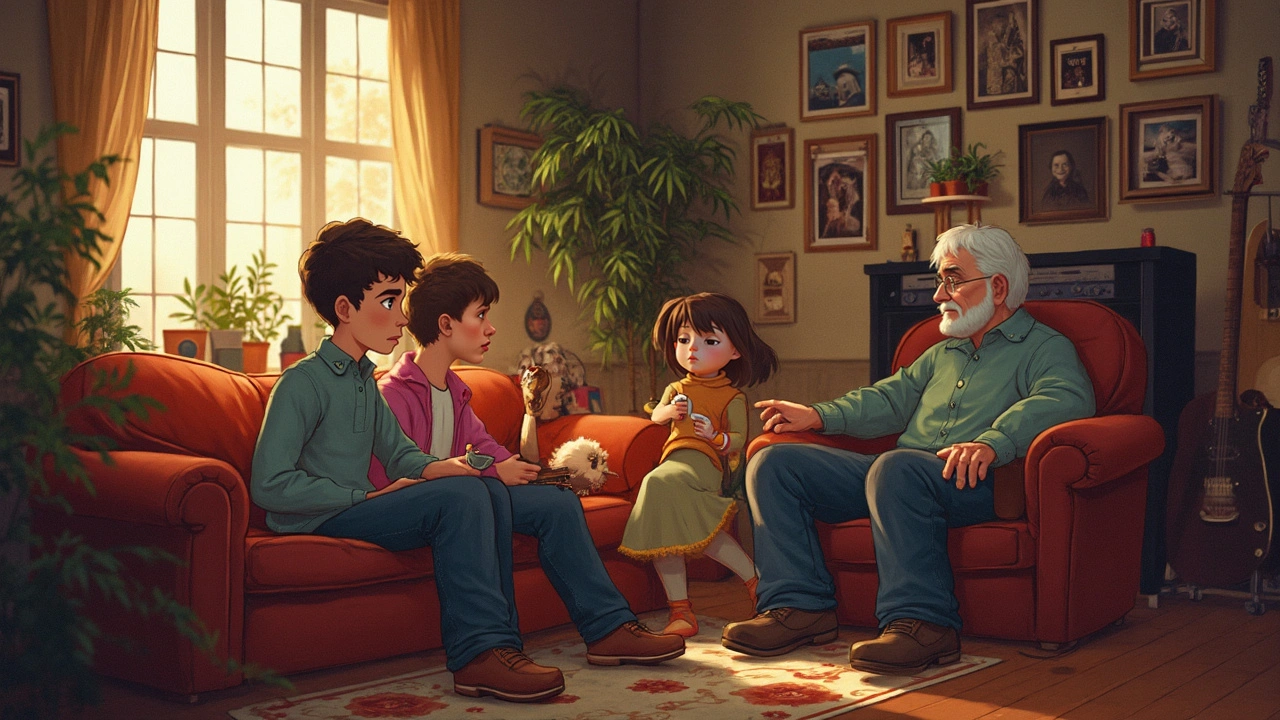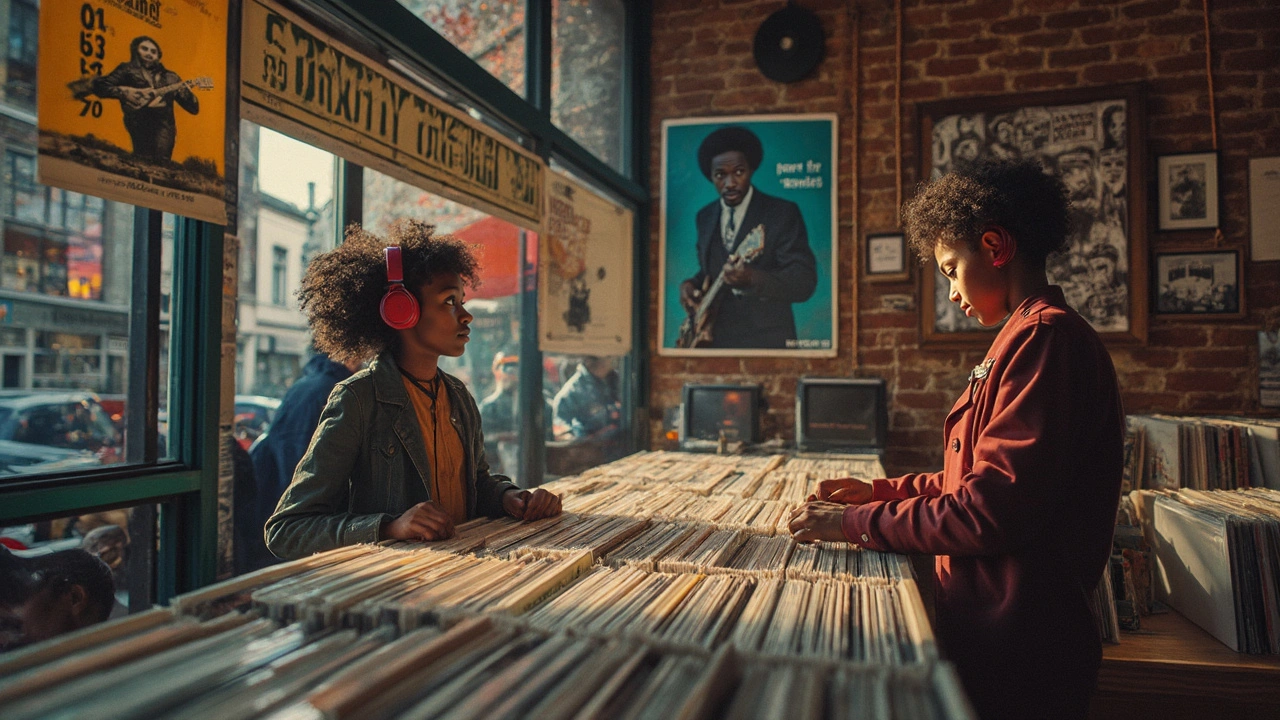Ever notice how some of the biggest hits sound a little familiar—even if you can't quite put your finger on why? Chances are, you're hearing echoes of blues music. It's not just old guitar sounds or moody lyrics; modern artists keep dipping into the blues playbook to give their songs that extra punch.
Think about the emotional delivery when Adele belts out a ballad or the raw riffs in John Mayer’s latest album. That’s straight from the same well legends like B.B. King and Muddy Waters tapped decades ago. You don’t have to be an expert to pick up on these connections. Once you start listening for little things—like that soulful bend on a guitar string or a call-and-response chorus—you’ll spot the blues roots almost everywhere.
- Echoes of Blues in Modern Hits
- Blues Techniques Borrowed by Today’s Artists
- Famous Artists Who Credit the Blues
- Spotting Blues Elements in Pop and Rock
- How to Bring Blues Inspiration into Your Own Music
Echoes of Blues in Modern Hits
You don't have to dig deep into your favorite streaming playlist to spot how blues music shapes today’s songs. The basic 12-bar blues pattern still pops up in tracks from artists who aren't afraid to blend classic with current. For example, The Black Keys’ "Lonely Boy" is basically modern blues dressed up as garage rock, with gritty guitar licks and punchy, repetitive choruses that could have come straight from the 1950s.
Even artists like Ed Sheeran sneak in classic blues chord progressions on songs like "Make It Rain"—and he’s not even an obvious blues guy! Meanwhile, John Mayer just goes for it, especially in his live performances, with solos that pay direct homage to legends like Stevie Ray Vaughan. If you compare those with classic tracks, the inspiration isn't subtle—it’s front and center.
Hip hop pulls from the blues too. Jay-Z’s "Dirt Off Your Shoulder" samples blues guitar runs, and Kendrick Lamar has talked about using bluesy melodies to add emotional punch. It’s not just about the notes; it’s about the soul and honesty that keeps people hooked. Drake, Post Malone, and even Billie Eilish slip in those moody, confessional vibes that started way back in southern juke joints.
Check out this quick comparison showing how specific modern artists weave blues influence into their biggest hits:
| Modern Artist | Song | Blues Connection |
|---|---|---|
| The Black Keys | Lonely Boy | Riffs, 12-bar progression |
| John Mayer | Gravity | Guitar licks, blues scales |
| Ed Sheeran | Make It Rain | Classic blues chord structure |
| Kendrick Lamar | Sing About Me, I’m Dying of Thirst | Blues melody, storytelling |
Once you know what to listen for, it’s easy to spot blues music all over modern radio, streaming charts, and live shows. That’s the secret: the blues never really left, it just got a new outfit.
Blues Techniques Borrowed by Today’s Artists
Modern musicians might have digital beats and fancy gear, but they’re still leaning hard on old blues music tricks. You’ve probably heard that signature twelve-bar chord progression—maybe not by name, but it turns up everywhere from Eric Clapton’s hits to Ed Sheeran’s deeper tracks. It isn’t just tradition for tradition’s sake. There’s something about those familiar patterns that makes people want to move and sing along.
Another classic blues move? The use of ‘blue notes’—those slightly bent notes that make you scrunch your face and pay attention. You’ll hear them in John Mayer’s guitar solos and even in Beyoncé’s vocals when she gets soulful. This expressive bending gives a song real emotion, and it’s a direct line back to the legends of blues music.
Call-and-response is another hand-me-down. Back in the blues clubs, artists like Muddy Waters and Koko Taylor would get the audience singing or clapping back. Today’s stadium shows do the same, just on a bigger scale. Pop and contemporary music producers build this give-and-take into the structure of songs, making the tunes feel interactive and alive.
“The blues are the roots; everything else is the fruits.” — Willie Dixon, legendary blues songwriter and producer
Want to spot these blues techniques the next time you listen? Here’s what to pay attention to:
- The use of simple, repeating chords (usually in sets of twelve bars)
- Vocal phrasing loaded with feeling—think stretching or bending a note to make a lyric pop
- Lyrics that tell a story about tough times or hope—real talk, no sugarcoating
- Instrumental solos where the player almost ‘talks’ through their guitar or harmonica
- Parts of the song where the singer calls out and the band or crowd answers back
Here’s a quick rundown of artists and the blues techniques they love:
| Artist | Blues Technique Used |
|---|---|
| John Mayer | Blue notes, guitar solos, storytelling lyrics |
| Gary Clark Jr. | 12-bar progression, call-and-response |
| Beyoncé | Emotional phrasing, vocal bends |
| The Black Keys | Raw guitar sounds, blues-based rhythms |
It’s wild how these tried-and-true moves from blues music keep popping up, helping new songs sound both fresh and classic at the same time. Makes you wonder how many of your favorite tracks got their vibe from the blues, doesn’t it?

Famous Artists Who Credit the Blues
It might surprise you how many of today’s chart-toppers openly talk about their love for blues music. No matter the genre, loads of icons have gone out of their way to say how the blues shaped their sound, their songwriting, or just the way they feel music.
Take Eric Clapton, for example. He’s flat-out called Muddy Waters and Robert Johnson his heroes. Clapton even recorded a whole album, "Me and Mr. Johnson", as a tribute. Listen to any of his guitar solos, and the influence is obvious.
Then there’s John Mayer. He started off making pop hits, but he’s told Rolling Stone and other outlets more than once how much he studied Stevie Ray Vaughan and B.B. King. That mix of clean pop and dirty, emotional blues guitar? That’s his secret sauce. In fact, Mayer has said he “wouldn’t be here without the blues.”
Beyoncé’s got blues roots, too. Her early performances with Destiny’s Child showed hints of blues phrasing, and she’s spoken about listening to Etta James and Muddy Waters growing up. Her cover of "At Last" at Obama’s inauguration was pure blues homage.
Even the rock gods can’t hide it. The Rolling Stones picked their band name straight from a Muddy Waters song, and Keith Richards still calls Chuck Berry and Howlin’ Wolf the spark for the Stones’ earliest riffs.
Here’s a quick table showing just how deep blues goes in modern music:
| Artist | Blues Influence | Notable Example |
|---|---|---|
| Eric Clapton | Muddy Waters, Robert Johnson | "Me and Mr. Johnson" album |
| John Mayer | Stevie Ray Vaughan, B.B. King | "Continuum" album |
| Beyoncé | Etta James, Muddy Waters | "At Last" performance |
| The Rolling Stones | Muddy Waters, Chuck Berry | Band name, early albums |
So, whether it’s pop, rock, or R&B, the big names in modern artists are quick to give blues music its due. Want to dig deeper? Try listening to their early albums side-by-side with blues classics. The crossover is clearer than ever when you know what to listen for.
Spotting Blues Elements in Pop and Rock
You’d be surprised how much blues music is baked into top 40 hits and arena rock anthems. Even if the artists aren’t walking around with harmonicas, the influence is right there hiding in plain sight. Let’s break down some things to listen for.
- 12-Bar Blues Progression: This is the bread-and-butter chord sequence straight from the Mississippi Delta. You’ll hear it in everything from The Beatles’ “Can’t Buy Me Love” to countless Rolling Stones tracks. If a song feels “classic,” chances are it’s leaning on this backbone.
- Blues Guitar Licks: Want to hear the blues in modern music? Focus on the bends and slides in guitar solos. John Mayer’s “Gravity” and Gary Clark Jr.’s “Bright Lights” are direct shout-outs to the old school blues sound.
- Call-and-Response Vocals: This is classic blues—one phrase is sung or played, and then the band or another singer echoes or answers. Bands like Alabama Shakes and even early Coldplay slip this style into their hooks.
- Blue Notes: That slightly ‘off’ pitch, where a note is bent down just a little, screams old blues. Listen to Amy Winehouse or Hozier—those notes aren’t random, they’re lifted straight out of the blues tradition.
- Lyrical Themes: Heartbreak, tough times, or just keeping on—that’s the blues attitude. Pop songs might sound glossier, but the messages often come from the same roots. Sam Smith, for instance, wears heartbreak almost as openly as Muddy Waters ever did.
Modern artists know these tricks work. They borrow them for a reason: they connect with listeners and make earworms that actually stick. Take a look at this quick table that shows just a few big songs and their blues roots:
| Modern Song | Artist | Blues Element |
|---|---|---|
| “Rolling in the Deep” | Adele | Blue notes, soulful vocal phrasing |
| “Gravity” | John Mayer | 12-bar progressions, guitar licks |
| “Come Together” | The Beatles | Swampy grooves, bluesy bassline |
| “Lonely Boy” | The Black Keys | Classic blues riff, raw guitar |
It’s not about copying, but building on the blues music foundation in new ways. So next time you’re listening to your favorite pop or rock track, pay attention. You might be hearing more blues than you ever realized.

How to Bring Blues Inspiration into Your Own Music
Add a little blues music magic to your own songs and you'll feel the difference. The fun part? You don’t need to play like Stevie Ray Vaughan to start—just try a few simple ideas that have fueled modern artists for decades.
First, dive into the classic twelve-bar blues pattern. This chord progression is the backbone of thousands of hits across genres. Play around with it in A or E (easy keys for guitar and piano) and notice how natural everything starts to sound. It’s almost like an automatic template.
- Experiment with blue notes: These are the slightly bent or "off" notes that give blues and contemporary music its gritty, soulful edge. On guitar, try sliding or bending up to the third or seventh note in any scale. It’ll sound incredibly familiar—that’s because it’s everywhere from The Rolling Stones to Hozier.
- Make it conversational: Blues is all about feeling, not perfection. Let your vocals or guitar phrases "talk" a bit more. Try a call-and-response section, where you sing a line and answer it with your instrument or another singer. It's a classic trick that never gets old.
- Don’t shy away from real-life lyrics: Great blues-inspired songs always have simple, honest lyrics. Write about everyday stuff—tough days, breakups, good luck, or bad decisions. That’s what keeps it relatable and connects you to your listeners.
- Use classic blues instruments: If you want that signature flavor, sprinkle in a harmonica, slide guitar, or even a simple shuffle beat on drums. Lots of modern bands sample these sounds because they work—just listen to Gary Clark Jr. or even Arctic Monkeys for proof.
If you’re curious about how effective borrowing these elements can be, check out some data: blues-inspired tracks are still getting millions of plays online each month.
| Artist | Monthly Spotify Plays (2025) |
|---|---|
| John Mayer | 14 million |
| Hozier | 11 million |
| Gary Clark Jr. | 4 million |
Bottom line: you don’t have to stick to tradition, but using tricks from blues music will set your songs apart—just as it inspires countless modern artists today.

